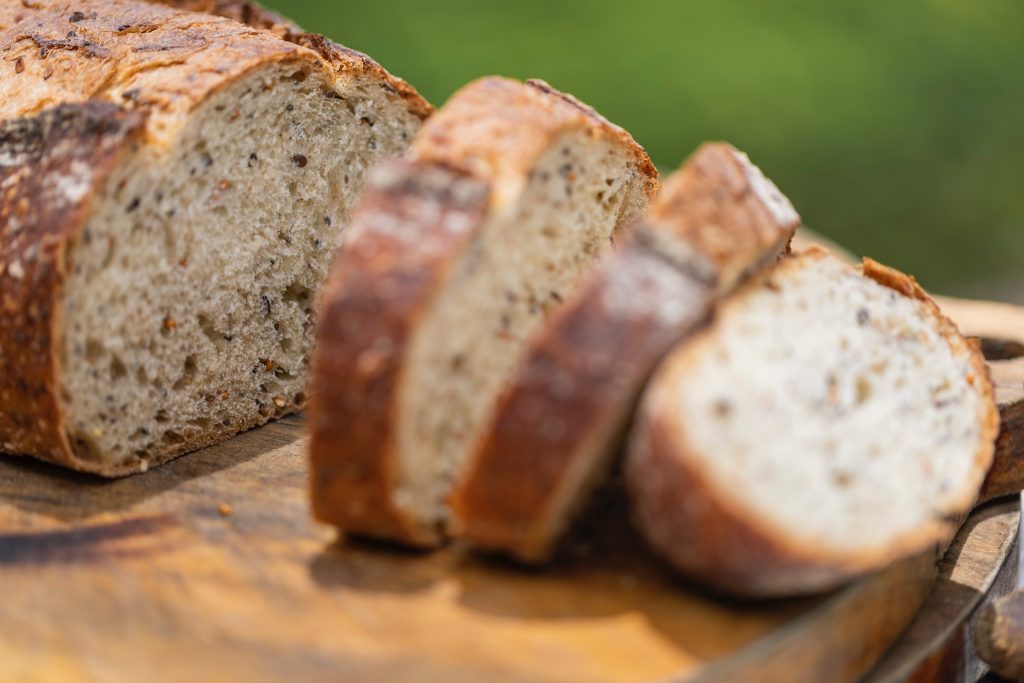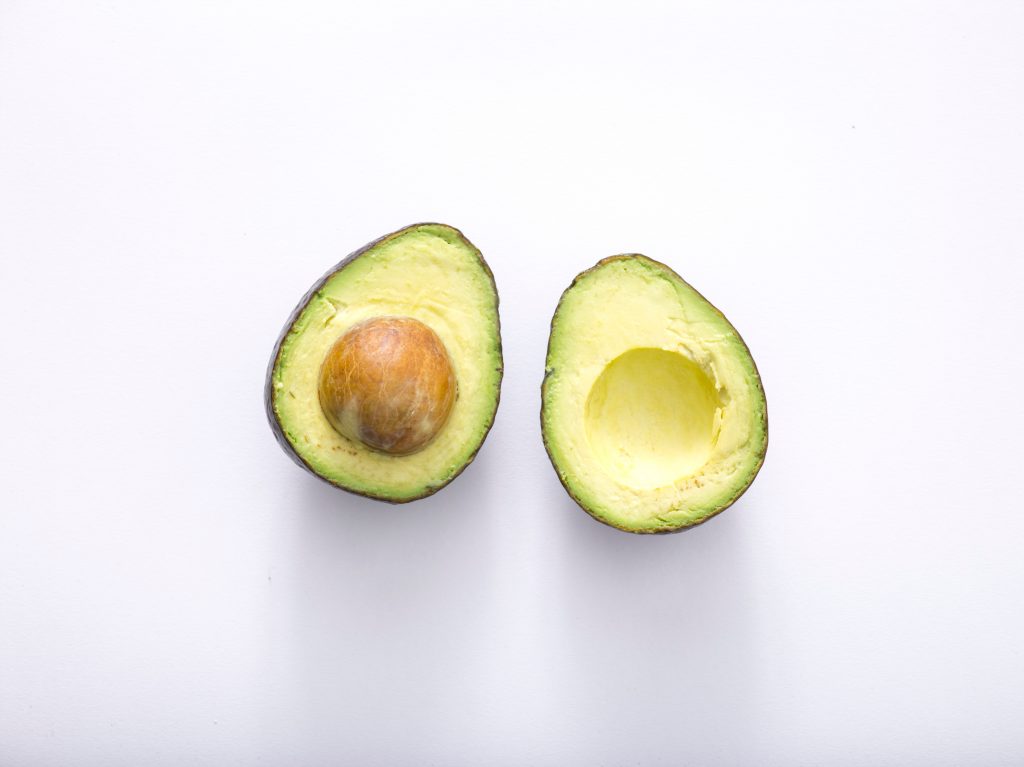Nutrients in Food – Macronutrients
Carbohydrates

The major source of energy fuel is carbohydrate. They are constructed from atoms of carbon, oxygen, and hydrogen, which occur in the proportion CH2O, from which the term carbohydrate comes.
Carbohydrates comprise two major classes: simple carbohydrates and complex carbohydrates. Simple carbohydrates include monosaccharides and disaccharides. Monosaccharides are the simplest form of carbohydrate as they cannot be reduced in size to smaller carbohydrate units by hydrolysis (digestion). Monosaccharides are called simple sugars. The most “famous” monosaccharide is the 6-carbon sugar, glucose. Some others are galactose and fructose.
Disaccharides consist of two monosaccharide units joined by covalent bonds, i.e. sucrose, consisting of one glucose and one fructose residue; lactose, consisting of one glucose and one galactose residue. Some others are saccharose, maltose, trealose. Saccharose is the common white or brown sugar we use for cakes and sweets.
Complex carbohydrates include oligosaccharides, containing 3 to 10 saccharide units, joined by covalent bonds, while polysaccharides contain more than 10 units, reaching even thousands of them. The number of units is indicated by a prefix such as tri, tetra, penta, and so on. Among the oligosaccharides, trisaccharides occur most frequently in nature.
Among polysaccharides, made only of glucose units, glycogen is from animal origin, while starch, dextrins and cellulose, are all of plant origin, deriving from cereal grains and vegetables.
Protein

Protein is an important macronutrient used in the building, repairing and maintaining of bones, muscles, skin and blood. It also provides the building blocks for enzymes, hormones and vitamins.
Most commonly used classifications of dietary proteins are according to their essential amino acid (EAA) content (i.e., complete vs. incomplete), their origin (i.e., plant vs. animal), or other more specific methods. Proteins are chains of amino acids, essential and nonessential and each protein source is composed of various amino acids with different properties.
The quality of proteins has been ranked by assessing their biological value (protein quality measured by how efficiently the body utilizes protein consumed in the diet), protein efficiency ratio (body weight gained on a test protein divided by the grams of protein consumed), and/or limiting amino acids, but there are also other quality factors that should be addressed in the context of optimal health, i.e. insulinogenic properties, and overall effects on glycemia, if dealing with metabolic disease management. Among EAAs, leucine is more insulinogenic than other EAAs. It is abundant in egg white, cod, soy protein isolate, parmesan.
Animal protein sources usually contain adequate proportions of all the EAAs necessary to meet human requirements. While plant proteins are limited in one or more of the EAAs, such as lysine, threonine, tryptophan, cysteine or methionine. Nuts, seeds, legumes, and certain ancient grains (e.g., quinoa, kamut, amaranth, etc.) are some of the plant foods highest in protein content. Soybean in particular, is much higher in protein and EAAs than other plant-foods. Combining different plant proteins has been shown to be an effective way of attaining the necessary ratio of EAAs for meeting human requirements.
Fat
Like carbohydrates, fats are composed of carbon, hydrogen, and oxygen but with a much lower proportion of oxygen. They provide energy and are essential for several body functions. In particular, fats are the building blocks of cellular membranes, act as carriers for fat-soluble vitamins A, D, E, and K and, thanks to those fats stored in body tissues, they provide energy when eating is not possible. They also insulate the body and protect body organs.
Fats are present in both animal and plant foods, even though they are different in types and proportions.
They are either classified as essential and nonessential or by their degree of saturation with hydrogen atoms. Essential fatty acids (EFAs) are known as omega-3 and omega-6, and must be obtained through diet since humans cannot synthesize them. Nonessential fats are omega-9 fatty acids, which are necessary, but can be produced by our body as far as EFAs are present.
Regarding the degree of saturation, fats can be classified as saturated, monounsaturated, or polyunsaturated (PUFA), depending on their hydrogen content and the presence of covalent bonds. Monounsaturated fats present one covalent bond and they are traditionally considered very healthy, playing an important role in preventing cardiovascular diseases. Some foods containing monounsaturated fats are olives and olive oil, peanut oil, canola oil, avocados, high-oleic sunflower oil and cashew nuts. PUFA (Poly-Unsaturated Fatty Acids) include omega-6 and -3, they may present two or more covalent bonds, and are commonly considered very healthy, even though, omega-6 may easily exceed in Western diets, so causing some health problems, especially in relation to cardiovascular diseases. Similarly, saturated fats are useful in small amounts, otherwise being considered quite dangerous, notoriously involved in serious heart diseases. If one uses the previous classification, saturated fats would be considered nonessential, as our body can synthesize them.
Usually, saturated fats are present in animal food, although some vegetable fats, namely coconut, palm, and cocoa butter, are considered exceptions, containing large proportions of saturated fats.
Among animal foods, the richest sources of fats, as cholesterol, saturated and omega-6 ones, are meat (red and processed meats, such as bacon, sausage), lard, whole milk, cream, butter, cheese; egg yolks (egg white contains no fat; it is almost entirely protein and water), while fish have a lot of omega-3 fat because they eat algae, from which these fats can be obtained.
The plant foods containing the richest sources of fats (omega-9,-6,-3) are olives, seeds (sesame, sunflowers, pumpkins, hemp), nuts, nut and seed butters, avocados, coconut, and cocoa butter, algae, cooking oils made from olives, sunflower, safflower, corn, peanuts or soybeans, margarine (when is made from vegetable oils), other oils such as coconut and palm.
There is another type of fats, which is not good for our health, known as trans fatty acids (TFAs), artificially made via hydrogenation, total or partial. Just small amounts of TFAs are naturally present in animal food, but the rest we found in our diet is coming from processed, fried, industrially prepared and fast foods.
Check out the following posts on food families and micronutrients in food!
Wanna see how much you have learned about food families and nutrients? Let’s do the quiz here!


